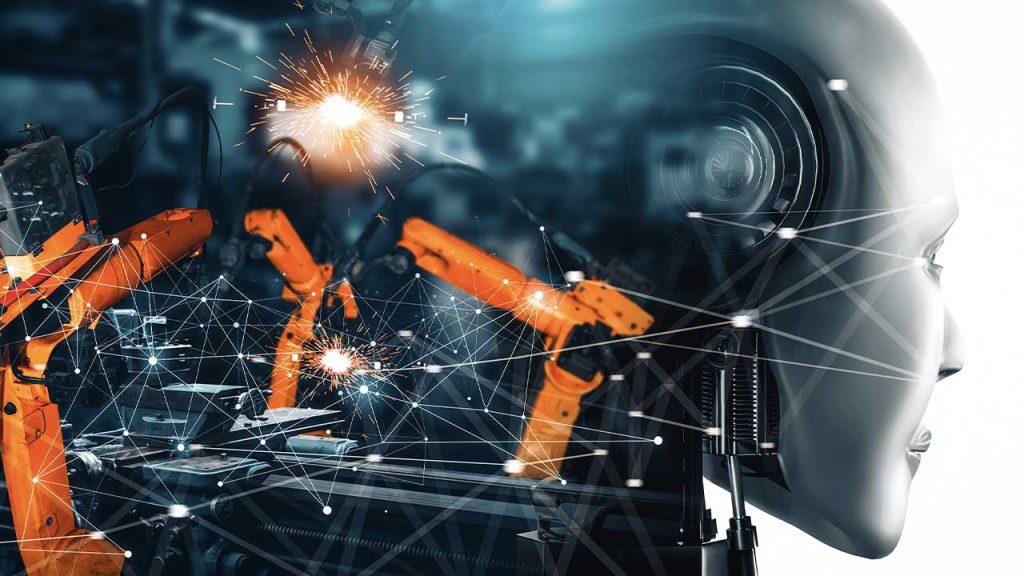Minimizing lost time and equipment in manufacturing with real-time asset tracking
Access to the correct assets, equipment, and raw materials at the right time is vital for maintaining production schedules in a busy factory. Workers can spend up to 20% of their time searching for missing tools, leading to delays, frustration, and increased safety risks. These inefficiencies can cause significant downtime, especially in high-value manufacturing environments. According to tools expert, Sandvik Coromant, imbalanced tool usage means 60% of the tool stock is never used, so workers overuse 40%. Similarly, procurement costs and waste will increase if perishable raw materials aren’t tracked and used on time.
Poor asset and situational awareness also impact worker safety on the factory floor when people work alongside autonomous mobile robots (AMRs), and heavy machinery. Real-time awareness is vital to warn workers when they enter hazardous areas and to avoid collisions with other workers and equipment, reduce downtime, and the associated costs. Consumer health and safety could also be impacted if product quality is impaired when a worker uses the wrong tools at the wrong time. This could also adversely affect regulatory and process compliance.
Align tracking and positioning solutions across an edge compute and AI platform
A wealth of tracking and positioning solutions are available to address these major challenges. For example, advanced Bluetooth and RFID technologies enable accurate indoor positioning and automated inventory management, reducing asset loss and improving situational awareness. AI-powered video solutions provide tagless asset detection and safety monitoring – ideal for contractors or visitors without tracking devices. Fixed cameras recognize objects, trigger emergency responses, and help track critical materials to resolve process bottlenecks.
Whatever solutions manufacturers implement, real-time asset tracking needs a robust technology foundation that ensures reliable, real-time performance across a complex site and can scale with a manufacturer’s growing digitization needs—asset tracking or otherwise.
First, on-site data processing is required for real-time visibility and advanced automation, particularly as more assets and people are connected to the network. Manufacturers should select a platform with an on-premises industrial edge to ensure data is processed without delay. This ensures operational technology (OT) data is centralized in a single data lake on the industrial edge, instead of being scattered across the site in different data siloes. This is important because each asset tracking solution typically relies on its own underlying technologies, resulting in more data silos. Consolidating this into a unified data hub at the on-premises edge gives manufacturers a complete view of asset locations and movements. When combined with contextual data from production systems, logistics, environmental sensors and connected worker solutions, this enables more holistic insights. Such comprehensive, real-time data sets are also critical to facilitate the successful deployment of AI applications that drive advanced automation, real-time decision-making and continuous improvement.
Second, connectivity must be addressed to ensure critical operational data from machines, devices and sensors is available in real-time. Across a vast and flexible factory floor with changing production layouts and filled with metal robots, shelves, and equipment, Wi-Fi alone isn’t enough, as signals are impeded, and handovers are delayed, causing assets to disconnect, which halts productivity and potentially creates hazards to worker safety. With a platform that leverages 4G and 5G private wireless connectivity, alongside Wi-Fi, manufacturers have the greatest reliability and choice.
Private wireless allows them to connect more assets, benefit from the greatest coverage and reach, and prioritize critical use cases. AMRs and vehicles remain connected and aware of everything on the shopfloor for safer and productive operations, and Wi-Fi can be reserved to support non-business-critical applications or used simultaneously with private wireless to address demanding use-cases that require a combined network approach.
The final components for a successful digitalization strategy are devices and applications that connect people and assets faster and more intuitively. These include ruggedized user devices integrated with applications that allow workers to access and share alerts, and routers and dongles to connect vehicles, machines, and other assets to the network.
Benefit from smarter, connected tracking capabilities faster
The benefits of edge compute and AI become clear when deploying use-cases such as real-time asset tracking, as they can be implemented more seamlessly across a factory utilizing many different systems and communications protocols. For example, by introducing geofencing, teams can be alerted when stock is removed from authorized areas to reduce the cost associated with stolen or misplaced tools. Or, at the end of a shift, when a tool isn’t stored correctly, alerts can trigger workers to return them, minimizing disruption. Raw materials can be used more intelligently, and low stock alerts can trigger the reordering process.
As more tracking and positioning solutions are implemented, manufacturers can evolve capabilities further by bringing processing capabilities to the far edge, even closer to where data is produced. This will allow them to use AI to converge and process data from multiple tracking and positioning solutions faster, benefitting from increased intelligence, contextual awareness, and tracking continuity across different environments to understand safety risks and process inefficiencies more holistically.
As real-time tracking of assets is implemented into everyday workflows, manufacturers can ensure tools, equipment, and stock are always available and used correctly, to reduce disruptions, keep maintenance costs under control, maintain productivity and compliance, and more. They can make better decisions about future process changes, factory layouts, and autonomous robot and vehicle routes, and they can better ensure the safety of their workers.
About the author
 This article was written by Tom Richter. As the Global Head of Discrete & Process Manufacturing Verticals for Enterprise Campus Edge, Tom Richter is responsible for the design and specification of tailored network solutions based on the specific vertical requirements of manufacturing companies. With more than 25 years of experience in sales, marketing, and commercial management and a profound technical understanding of the underlying technologies, he provides support for the Nokia sales colleagues to serve this industrial segment.
This article was written by Tom Richter. As the Global Head of Discrete & Process Manufacturing Verticals for Enterprise Campus Edge, Tom Richter is responsible for the design and specification of tailored network solutions based on the specific vertical requirements of manufacturing companies. With more than 25 years of experience in sales, marketing, and commercial management and a profound technical understanding of the underlying technologies, he provides support for the Nokia sales colleagues to serve this industrial segment.
Related articles:

